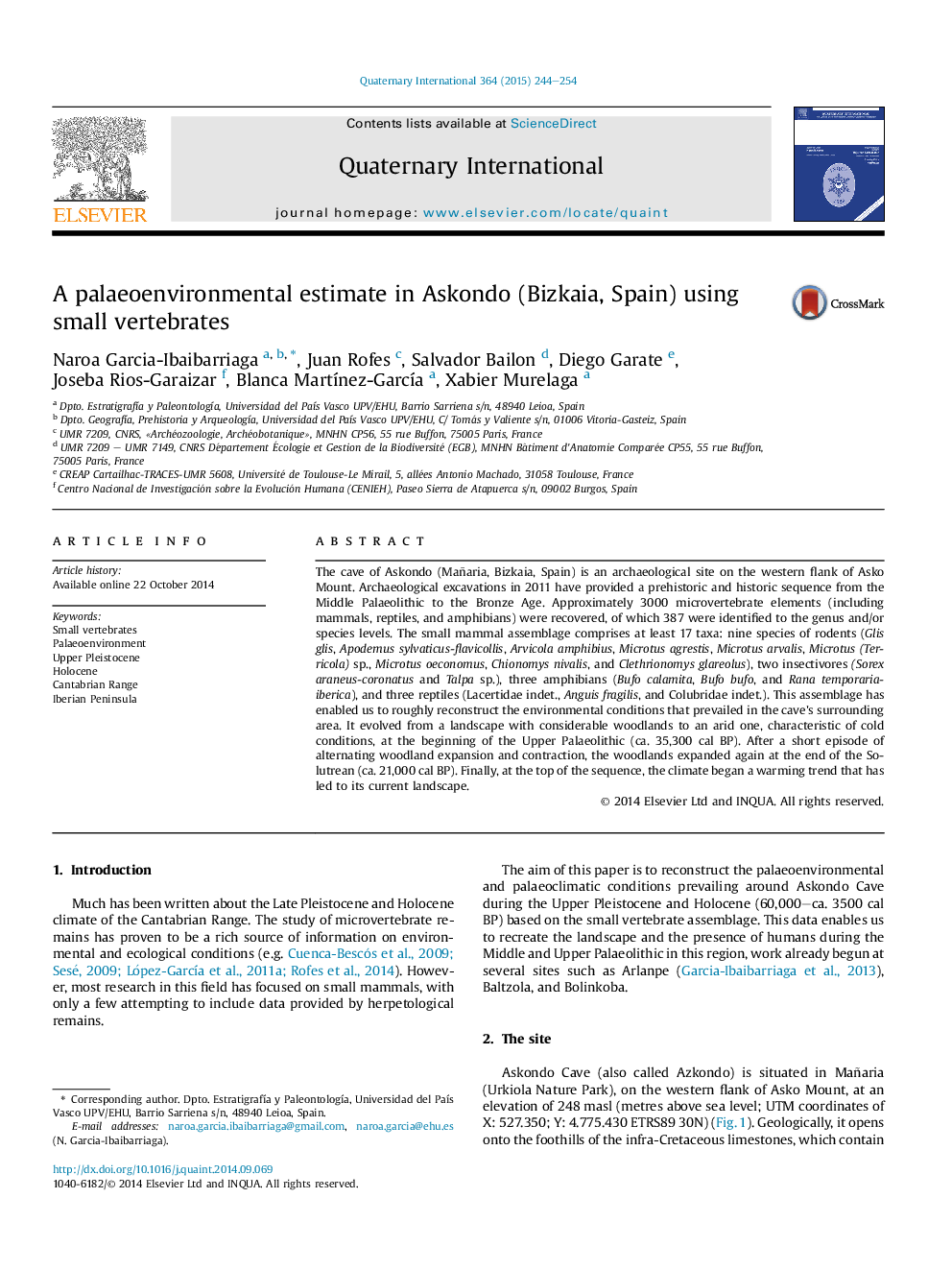| کد مقاله | کد نشریه | سال انتشار | مقاله انگلیسی | نسخه تمام متن |
|---|---|---|---|---|
| 1040889 | 1484133 | 2015 | 11 صفحه PDF | دانلود رایگان |

The cave of Askondo (Mañaria, Bizkaia, Spain) is an archaeological site on the western flank of Asko Mount. Archaeological excavations in 2011 have provided a prehistoric and historic sequence from the Middle Palaeolithic to the Bronze Age. Approximately 3000 microvertebrate elements (including mammals, reptiles, and amphibians) were recovered, of which 387 were identified to the genus and/or species levels. The small mammal assemblage comprises at least 17 taxa: nine species of rodents (Glis glis, Apodemus sylvaticus-flavicollis, Arvicola amphibius, Microtus agrestis, Microtus arvalis, Microtus (Terricola) sp., Microtus oeconomus, Chionomys nivalis, and Clethrionomys glareolus), two insectivores (Sorex araneus-coronatus and Talpa sp.), three amphibians (Bufo calamita, Bufo bufo, and Rana temporaria-iberica), and three reptiles (Lacertidae indet., Anguis fragilis, and Colubridae indet.). This assemblage has enabled us to roughly reconstruct the environmental conditions that prevailed in the cave's surrounding area. It evolved from a landscape with considerable woodlands to an arid one, characteristic of cold conditions, at the beginning of the Upper Palaeolithic (ca. 35,300 cal BP). After a short episode of alternating woodland expansion and contraction, the woodlands expanded again at the end of the Solutrean (ca. 21,000 cal BP). Finally, at the top of the sequence, the climate began a warming trend that has led to its current landscape.
Journal: Quaternary International - Volume 364, 7 April 2015, Pages 244–254